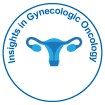开放获取期刊获得更多读者和引用
700 种期刊 和 15,000,000 名读者 每份期刊 获得 25,000 多名读者
抽象的
Reducing and mitigating the risk of foreign object retention in surgery, midwifery and obstetrics
Alison Kay
Statement of the Problem: Retained Foreign Objects (RFO) is rare events but can be devastating for patient and practitioners alike. Research has diverged from a blame culture and acknowledges the impact that communication and collective team responsibility could have on reducing RFOs. This research designed and evaluated a pilot implementation of foreign object management in two Irish Hospitals sites, one surgical, one midwifery & obstetrics. It recommends further steps to ensure we move towards a team responsibility for proactive patient safety management of RFOs. Methodology: A multi-phase socio-technical systems approach was adopted focussing heavily on co-design, actively engaging and collaborating with clinical and other healthcare staff through each phase of research. The evaluation was multi-modal and both qualitative and quantitative in nature.
Findings: Team Communication–Communication surrounding the count must be clear. Silence for the count must be preserved (where possible) and cultural support must be in place to raise the profile and integrity of the count to a higher level.
Context: It is vitally important to obtain a rich and accurate systems picture of RFO ‘how?’& ‘why?’ & ‘when?’objects are retained needs to be understood, not just the “who?”.
Education & Training: Specific training on RFO prevention should be given to all staff on a recurrent basis to promote a culture of encouragement to speak up and a culture of being listened to.
Reporting: The cultural interpretation of “near miss” in clinical settings needs to be revised. Learning from other safety critical
industries re smart data handling is prudent if effective implementation is to be achieved.
Conclusion & Significance: This research was novel in its approach to multi-modal evaluation and is significant as the research included much needed exploration of complex cultural, social and political challenges surrounding the count and RFO prevention.

 English
English  Spanish
Spanish  Russian
Russian  German
German  French
French  Japanese
Japanese  Portuguese
Portuguese  Hindi
Hindi